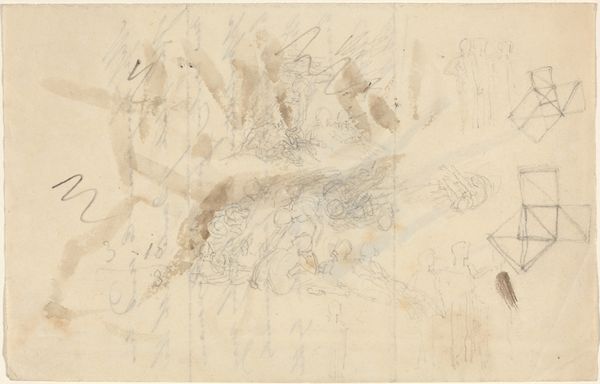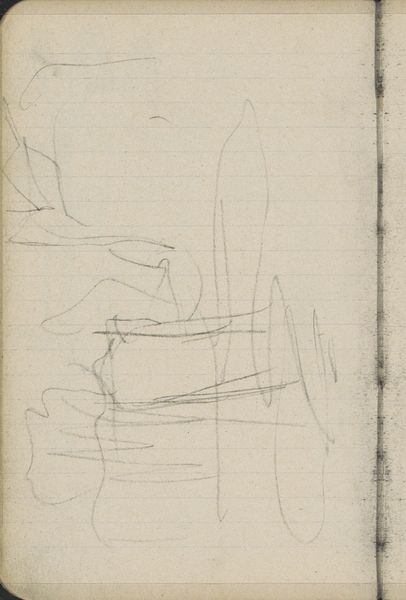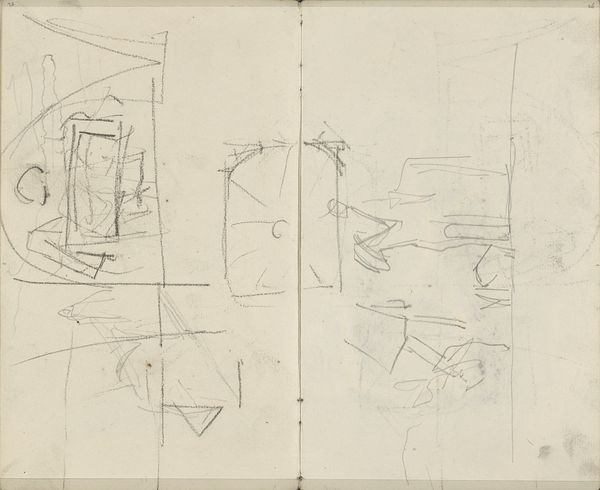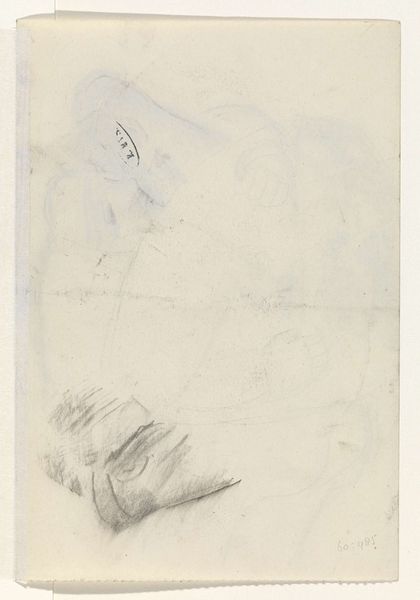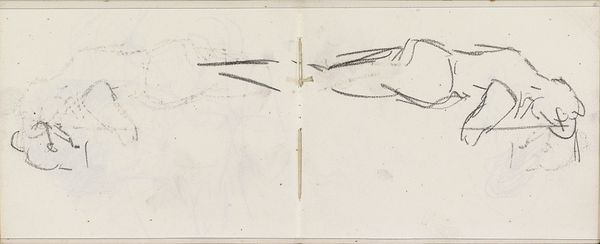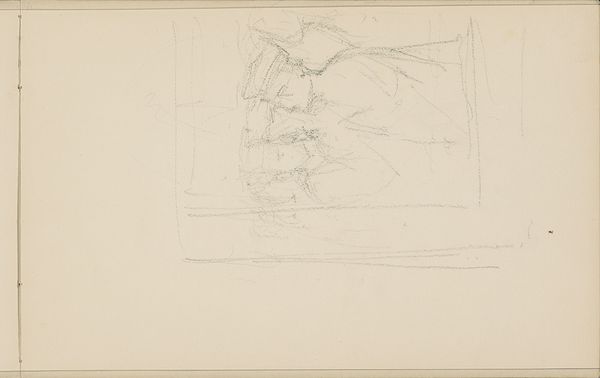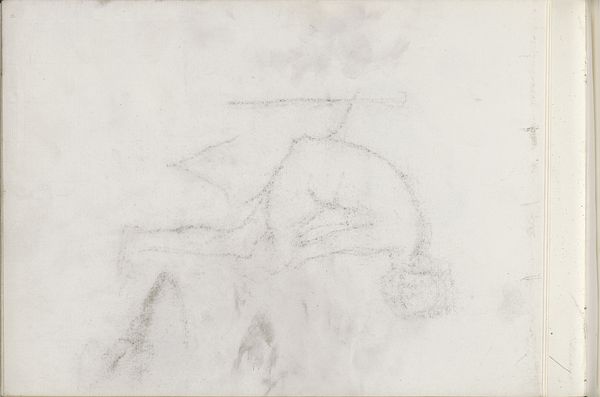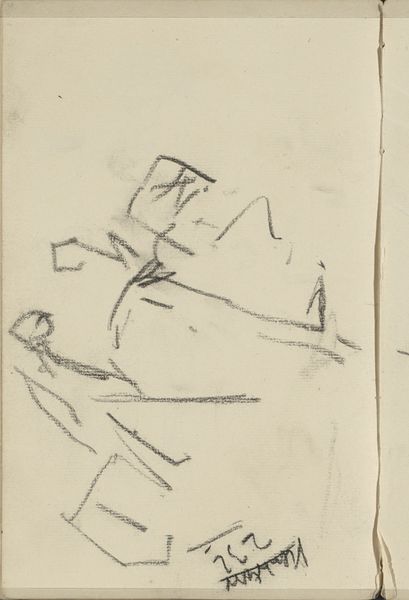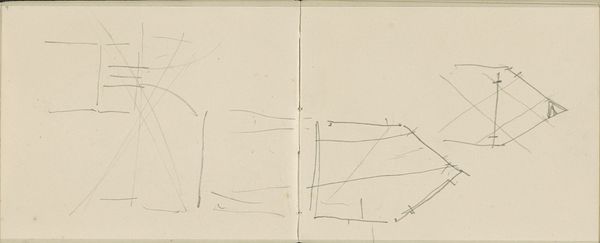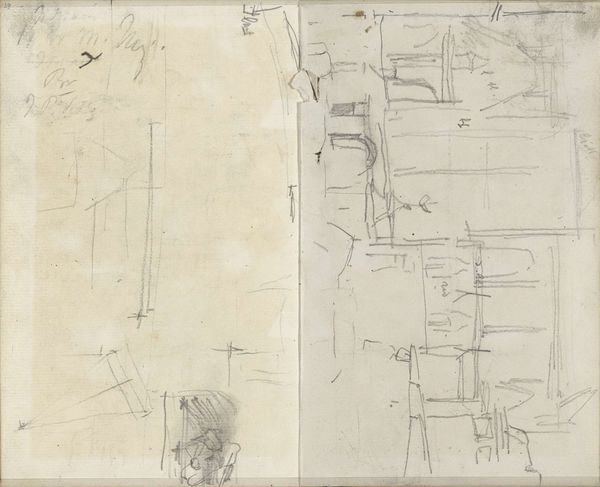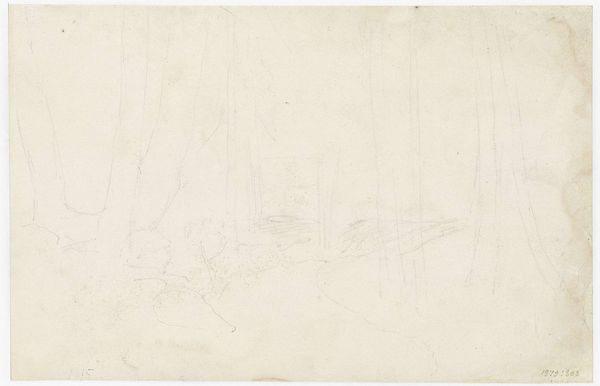
drawing, print, paper, graphite
#
portrait
#
drawing
# print
#
impressionism
#
paper
#
france
#
graphite
#
nude
Dimensions: 303 × 313 mm
Copyright: Public Domain
Editor: Here we have Paul Gauguin’s "Design for a Jardiniere: The Toilette," made around 1886 or 1887 using graphite on paper. It strikes me as very preliminary; you can see the grid lines and faint sketches of a nude figure. What is particularly interesting to you? Curator: It is interesting to note the presence of a grid; these were often tools employed to assist in transferring smaller sketches to larger canvases. Gauguin's choice of depicting a toilette scene within this framework is quite deliberate. During the late 19th century in France, depictions of women at their toilette became extremely popular, almost commonplace, reinforcing notions of femininity tied to appearance and domestic space. What are your thoughts on this piece being considered as a design? Editor: I see how that fits into the larger culture. I'm curious why he chose such an intimate scene for a jardiniere, something displayed publicly. Was this common? Curator: Excellent point. Presenting an intimate scene for public display created tension, offering both an acceptable image of feminine beauty and the frisson of voyeurism, all framed within domesticity made it palatable for a burgeoning bourgeoisie art market. The toilettes are loaded, in that way. Do you feel this complicates the viewer's position? Editor: Definitely! It feels less about idealizing beauty and more about observing something private made public. It makes me consider the relationship between art and societal expectations differently. Curator: Precisely! Gauguin’s “Design for a Jardiniere” serves not just as a preparatory sketch but also as a lens through which we can examine how art shapes, reflects, and even challenges social norms and cultural expectations. I like how he creates commentary via visual framing. Editor: I appreciate your insight. Seeing it this way highlights the power of art to be both decorative and deeply insightful.
Comments
No comments
Be the first to comment and join the conversation on the ultimate creative platform.
